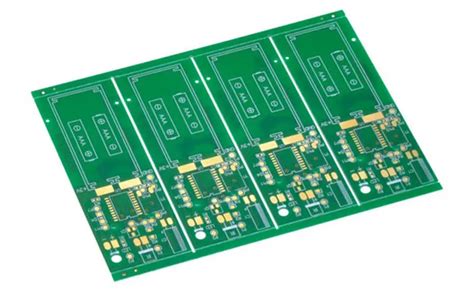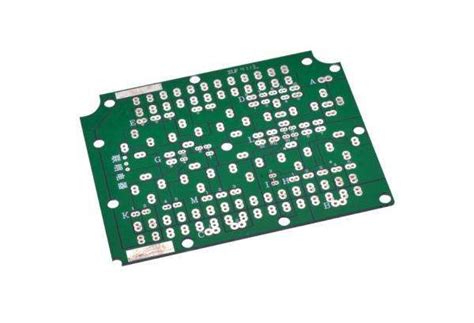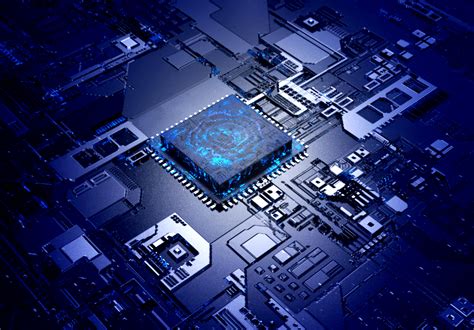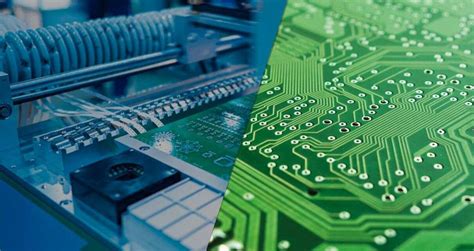Online pcb assembly
Benefits Of Online PCB Assembly Services
Online PCB assembly services have revolutionized the electronics manufacturing industry by offering a range of benefits that enhance efficiency, reduce costs, and improve the overall quality of electronic products. As the demand for electronic devices continues to grow, manufacturers are increasingly turning to online PCB assembly services to meet their production needs.
One of the primary advantages of these services is the significant reduction in lead times.
Traditional PCB assembly processes often involve multiple stages, each requiring considerable time and coordination. In contrast, online services streamline these processes by utilizing advanced software and automation technologies, allowing for faster turnaround times. This efficiency is particularly beneficial for companies looking to bring products to market quickly, thereby gaining a competitive edge.
Moreover, online PCB assembly services offer cost-effective solutions for both small and large-scale production.
By leveraging economies of scale and advanced manufacturing techniques, these services can significantly reduce production costs. This is especially advantageous for startups and small businesses that may not have the resources to invest in expensive manufacturing equipment. Additionally, online platforms often provide transparent pricing models, enabling companies to better manage their budgets and avoid unexpected expenses. The ability to access a global network of suppliers and manufacturers further contributes to cost savings, as companies can source components at competitive prices.
In addition to cost and time efficiencies, online PCB assembly services also enhance the quality and reliability of electronic products.
These services employ state-of-the-art equipment and adhere to stringent quality control standards, ensuring that each PCB meets the required specifications. Automated inspection processes, such as optical and X-ray inspections, are commonly used to detect defects and ensure the integrity of the assembly. This level of precision and attention to detail minimizes the risk of errors and defects, leading to higher-quality products that meet or exceed industry standards.
Furthermore, online PCB assembly services offer unparalleled flexibility and customization options.
Companies can easily upload their design files and specifications to the online platform, where they can be quickly reviewed and processed. This flexibility allows for rapid prototyping and iterative design changes, enabling manufacturers to refine their products based on real-time feedback and testing. The ability to customize orders also extends to the choice of materials and components, allowing companies to tailor their products to specific requirements and preferences.
Another notable benefit of online PCB assembly services is the accessibility and convenience they provide.
With just a few clicks, companies can initiate the assembly process from anywhere in the world, eliminating the need for physical visits to manufacturing facilities. This accessibility is particularly advantageous in today’s globalized market, where businesses often operate across multiple regions and time zones. Online platforms also offer comprehensive support and communication channels, ensuring that clients can easily track the progress of their orders and address any concerns that may arise.
In conclusion, online PCB assembly services offer a multitude of benefits that are transforming the electronics manufacturing landscape. By providing faster lead times, cost-effective solutions, enhanced quality, and greater flexibility, these services are enabling companies to innovate and compete more effectively in the global market. As technology continues to advance, it is likely that the adoption of online PCB assembly services will only increase, further driving efficiencies and improvements in the production of electronic devices.

How To Choose The Right Online PCB Assembly Provider
Selecting the right online PCB assembly provider is a critical decision for businesses and individuals involved in electronics manufacturing. The process of choosing a provider can significantly impact the quality, cost, and efficiency of your project. Therefore, it is essential to consider several factors to ensure that you partner with a provider that meets your specific needs and expectations.
To begin with, evaluating the provider’s experience and expertise in the field is crucial.
A provider with a proven track record in PCB assembly is more likely to deliver high-quality products. Experience often translates into a deeper understanding of the complexities involved in PCB assembly, including the ability to handle various types of components and technologies. Additionally, an experienced provider is more likely to have established processes and quality control measures in place, which can lead to more reliable outcomes.
Moreover, it is important to assess the range of services offered by the provider.
Some providers offer a comprehensive suite of services, from design and prototyping to full-scale production and testing. Opting for a provider that offers end-to-end solutions can streamline the production process, reduce lead times, and minimize the risk of errors. Furthermore, having a single point of contact for all stages of the project can enhance communication and coordination, leading to a more seamless experience.
Another critical factor to consider is the provider’s technological capabilities.
As technology continues to evolve, it is essential to choose a provider that stays abreast of the latest advancements in PCB assembly. This includes the ability to work with advanced materials, implement cutting-edge manufacturing techniques, and utilize state-of-the-art equipment. A technologically adept provider can offer innovative solutions that improve the performance and functionality of your PCBs.
In addition to technological capabilities, the provider’s commitment to quality assurance is paramount.
Quality assurance processes, such as automated optical inspection (AOI) and in-circuit testing (ICT), are essential for ensuring that the assembled PCBs meet the required specifications and standards. It is advisable to inquire about the provider’s quality control measures and certifications, such as ISO 9001, which demonstrate a commitment to maintaining high-quality standards.
Cost is another significant consideration when choosing an online PCB assembly provider.
While it may be tempting to select the provider with the lowest price, it is important to consider the overall value offered. This includes evaluating the quality of materials used, the level of customer support provided, and the provider’s ability to meet deadlines. A provider that offers competitive pricing without compromising on quality and service is likely to be a more cost-effective choice in the long run.
Furthermore, the provider’s reputation and customer reviews can offer valuable insights into their reliability and performance.
Reading testimonials and seeking recommendations from industry peers can help you gauge the provider’s ability to deliver on their promises. A provider with a strong reputation is more likely to prioritize customer satisfaction and maintain long-term relationships.
In conclusion, choosing the right online PCB assembly provider requires careful consideration of several factors, including experience, service offerings, technological capabilities, quality assurance, cost, and reputation. By thoroughly evaluating these aspects, you can make an informed decision that aligns with your project requirements and ensures a successful partnership.

Innovations In Online PCB Assembly Technology
The realm of online PCB assembly has witnessed remarkable innovations, fundamentally transforming the way electronic devices are designed and manufactured. As technology continues to advance at an unprecedented pace, the demand for more efficient, precise, and cost-effective PCB assembly solutions has become increasingly pronounced. This evolution is driven by the need to accommodate the growing complexity of electronic components and the desire to streamline production processes.
One of the most significant innovations in online PCB assembly technology is the integration of advanced automation systems.
Automation has revolutionized the assembly process by minimizing human intervention, thereby reducing the likelihood of errors and enhancing production speed. Automated systems are capable of handling intricate tasks with precision, such as component placement and soldering, which are critical to ensuring the functionality and reliability of the final product. Moreover, these systems can operate continuously, significantly increasing throughput and enabling manufacturers to meet tight deadlines.
In addition to automation, the advent of sophisticated design software has played a pivotal role in advancing online PCB assembly.
Modern design tools offer a range of features that facilitate the creation of complex circuit layouts with ease. These tools allow engineers to simulate and test their designs virtually, identifying potential issues before they manifest in the physical assembly. This capability not only saves time and resources but also enhances the overall quality of the final product. Furthermore, the integration of cloud-based platforms has enabled real-time collaboration among design teams, regardless of their geographical locations, fostering innovation and efficiency.
Another noteworthy development in online PCB assembly is the implementation of advanced materials and manufacturing techniques.
The use of high-performance substrates and conductive materials has improved the thermal and electrical properties of PCBs, making them more suitable for demanding applications. Additionally, innovations in additive manufacturing, such as 3D printing, have opened new possibilities for PCB design and production. These techniques allow for the creation of complex geometries and multi-layered structures that were previously unattainable with traditional methods.
The rise of the Internet of Things (IoT) and the proliferation of connected devices have further spurred advancements in online PCB assembly technology.
As devices become smaller and more interconnected, the need for compact and efficient PCBs has intensified. In response, manufacturers have developed miniaturization techniques that enable the integration of more components into smaller spaces without compromising performance. This trend is particularly evident in the consumer electronics sector, where devices such as smartphones and wearables demand ever-smaller and more powerful PCBs.
Moreover, the emphasis on sustainability and environmental responsibility has influenced innovations in PCB assembly.
Manufacturers are increasingly adopting eco-friendly practices, such as using lead-free solder and recyclable materials, to minimize their environmental impact. Additionally, energy-efficient production processes are being implemented to reduce the carbon footprint of PCB manufacturing.
In conclusion, the innovations in online PCB assembly technology have significantly enhanced the efficiency, precision, and sustainability of electronic device production. Through the integration of automation, advanced design software, and cutting-edge materials, the industry has been able to meet the growing demands of modern electronics. As technology continues to evolve, it is likely that further advancements will emerge, driving the industry towards even greater levels of innovation and excellence.
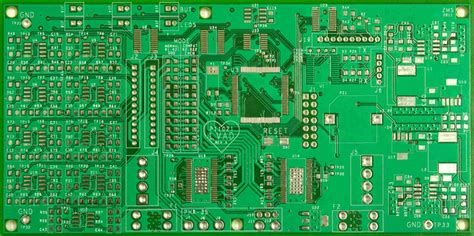
Cost-Effective Strategies For Online PCB Assembly
In the rapidly evolving landscape of electronics manufacturing, online PCB assembly has emerged as a pivotal component in streamlining production processes. As companies strive to remain competitive, cost-effective strategies for online PCB assembly have become increasingly important. By leveraging these strategies, businesses can optimize their production capabilities while minimizing expenses, thus enhancing their overall efficiency and profitability.
To begin with, one of the most effective strategies for reducing costs in online PCB assembly is to embrace design for manufacturability (DFM) principles.
By incorporating DFM into the initial design phase, engineers can identify potential manufacturing issues early on, thereby reducing the likelihood of costly revisions later in the process. This proactive approach not only saves time but also ensures that the final product is optimized for efficient assembly. Furthermore, utilizing standardized components and design templates can significantly reduce the complexity and cost of the assembly process.

In addition to DFM, another cost-effective strategy is to partner with a reliable online PCB assembly service provider.
These providers often offer a range of services, from prototyping to full-scale production, allowing businesses to scale their operations as needed. By outsourcing assembly to a specialized provider, companies can benefit from the provider’s expertise, advanced equipment, and economies of scale, which can lead to substantial cost savings. Moreover, many online PCB assembly services offer competitive pricing models, such as volume discounts, which can further reduce expenses for larger production runs.
Transitioning to the procurement of components, it is essential to adopt a strategic approach to sourcing materials.
By establishing strong relationships with suppliers and negotiating favorable terms, businesses can secure high-quality components at competitive prices. Additionally, purchasing components in bulk can lead to significant cost reductions, as suppliers often offer discounts for larger orders. It is also advisable to maintain a diverse supplier base to mitigate risks associated with supply chain disruptions, which can lead to unexpected costs and delays.
Another critical aspect of cost-effective online PCB assembly is the implementation of efficient production processes.
By investing in automation and advanced manufacturing technologies, companies can enhance their production capabilities while reducing labor costs. Automation not only increases the speed and accuracy of assembly but also minimizes the risk of human error, leading to higher quality products and fewer defects. Furthermore, continuous process improvement initiatives, such as lean manufacturing and Six Sigma, can help identify and eliminate inefficiencies, resulting in further cost savings.
Moreover, effective project management plays a crucial role in controlling costs during the PCB assembly process.
By setting clear objectives, timelines, and budgets, project managers can ensure that resources are allocated efficiently and that projects remain on track. Regular monitoring and evaluation of project progress can also help identify potential issues early, allowing for timely interventions that prevent cost overruns.
In conclusion, adopting cost-effective strategies for online PCB assembly is essential for businesses seeking to optimize their production processes and maintain a competitive edge. By focusing on design for manufacturability, partnering with reliable service providers, strategically sourcing components, implementing efficient production processes, and practicing effective project management, companies can achieve significant cost savings while delivering high-quality products. As the electronics industry continues to evolve, these strategies will remain vital in ensuring the success and sustainability of businesses in this dynamic field.

